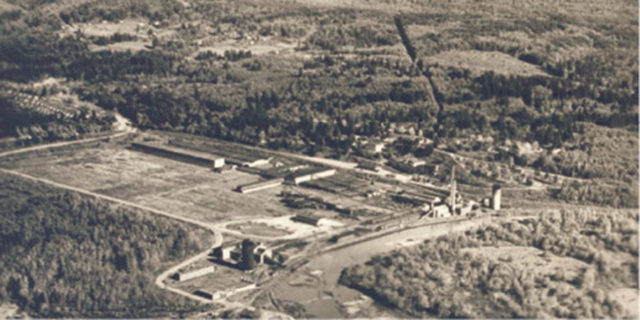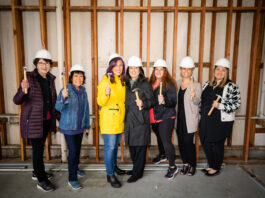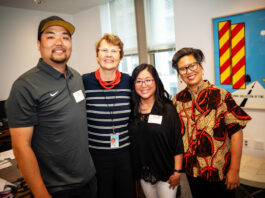by David Yamaguchi, The North American Post
On June 11, the comment period of the Draft Environmental Impact Statement (DEIS) of the Snoqualmie Mill development project closed. From now, the project moves to the final EIS stage, when comments submitted by concerned parties on the draft are addressed. The DEIS is on the City of Snoqualmie website (www.ci.snoqualmie.wa.us/393/Mill-Property).
What is the Snoqualmie Mills project, the reader may ask. The plan is to build a mixed-commercial/light-industrial village on the former Weyerhaeuser sawmill site adjoining the town of Snoqualmie, a mile upstream of the falls. The hope is to host local winery visitors and to provide a community concert venue.
The project is of interest to readers because there was a small Japanese community in Snoqualmie until World War II. It was made of lumber workers and their families. In 1942, they were removed to Japanese American internment camps. As the JA’s lived in company barracks on the proposed project grounds, there may be an opportunity for an educational display or signage on Snoqualmie JA history. Such material would be significant in demonstrating the extent to which the US government went to remove JA’s from the West Coast.
An archaeological survey of the site, Cultural Resources, of the DEIS, reads:
“Some of the objects brought to the surface were… two glass vessels with embossed Japanese script, fragments from five Japanese tea cups… most of the artifacts were domestic debris and primarily consisted of Japanese-style tea cups, and bowls, shoes, and pharmaceutical bottles… Its location and the number of Japanese dishware and the two bottles embossed with Japanese writing strongly suggest the feature is associated with Japanese residents… The number of shoe fragments present could be indicative of deposition when community members were interned. Shoes may have been too bulky to carry… Additionally, a German manufactured doll may have been abandoned because of its association with World War II adversaries…
“The archaeological deposit is below groundwater…”

That section also refers to a 2015 interview of Eiko Yamaichi by the National Park Service that guided the archaeologists. Relevant passages from the Densho-led interview of Mrs. Yamaichi, who lived in Snoqualmie until her senior year of high school, follow (from Densho, http://ddr.densho.org/narrators/860/).
“I was born in Seattle, Washington, and I went to school there ’til I was in the fourth grade. And during that time, Depression happened, 1933 and on. And my father lost his position, he was the produce clerk. And he was working for a Japanese family on Jackson Street, and he lost his job, so in order to keep a roof over our head and feed us, why, he said he’d have to look for another job. So he did find one as a lumber sorter up in Snoqualmie Falls, Washington, and already there were quite a few Japanese men working and their families were housed in what was like a barrack, somewhat like the [internment] camp barracks, only that it was sectioned off to be like an apartment.
“Up until fourth grade, I was doing fine. I had… two girlfriends, they were both black, and I had no idea of their being different from me. It’s just that they were a little darker than I, and I’m dark, too. So it didn’t matter to me, but we were really good friends. And then when I moved away, then I went up to Snoqualmie Falls and most of those people were fair skinned, which is okay. But I noticed there was a little discrimination because there were a lot of American Indians attending school, too, so that’s when I really felt discrimination. And why? I mean, we’re all the same. But I learned from then on.
[Densho]: “Was the lumber company, or the logging company that your dad worked for… mentioned living in barracks there?
EY: “Yes, Weyerhaeuser… I never met them in person… evidently [Mr. Weyerhaeuser] really liked the work ethics of the Japanese… and so most of his workers were all Japanese men. And they were assigned certain areas of the lumber industry, some had to work in the section where they debarked the tree, some were in there slicing the log, a tree into logs, my father was there. Some were assigned sorting, and grading… I think the people who worked for… Weyerhaeuser and the family felt that we were really lucky and grateful, the fact that Mr. Weyerhaeuser provided a roof over our head and was able to hire our father so that we could eat.
“Right after December 7th [1941]… it never occurred to us that it would affect us. We figured we were in Washington, they were in California [the JA’s there], so two different states. And we were commiserating the fact that, gee, it’s too bad that they have to go. And before long, it affected us because the notice 9066 was posted and we came to the [Snoqualmie sawmill?] camp and looked at that and said, ‘Oh boy, that’s us…’
“I think it’s kind of unbelievable for us at that time…. Of course, the discussion, oh, it’s not going to affect us because we’re up here, they’re down there kind of thing. But helpless, and wondering what the future was, really. Especially when we got the notice. And I think it was the hardest on our parents because they were finally able to say, “Wow, we finally could see ourselves getting ahead a little bit after the Depression,” and then to have that happen and then find out that you could only carry what you could take with you… Because we had the outhouse, all the things pertaining to Japan, each family took it there and dumped it. The other day we were talking about that one time, he [possibly her husband, Jimi] said, ‘Yeah, my folks had an outhouse too, you know,’ and they were saying the same thing. It’s too bad we lost things that way, but that had to be…’”




